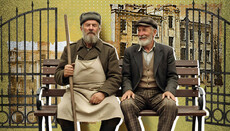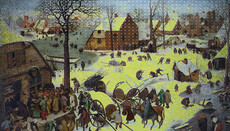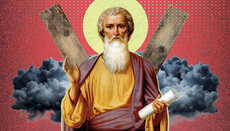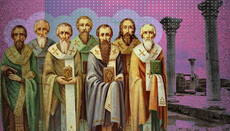Why Kyiv Caves Lavra is called that and why we can't abandon this sanctity
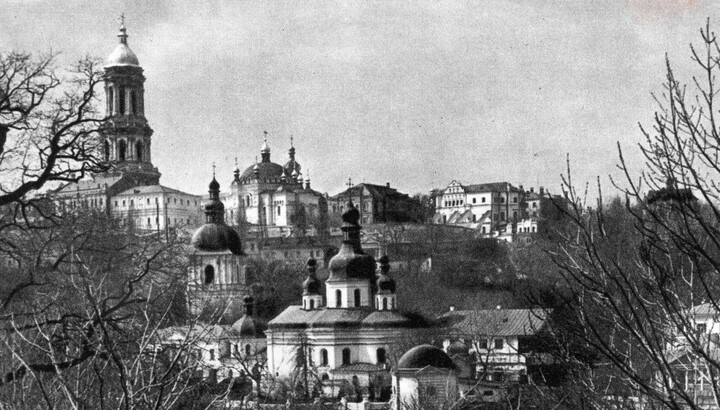
Prayer vigils for the Kyiv-Pechersk Lavra continue. What sanctuary do we want to preserve? What is its history? Which saints rest there?
In a recent interview, Maksym Ostapenko, the director of the National Reserve "Kyiv-Pechersk Lavra" (originally established by the Bolsheviks in 1922), stated: "We are trying to restore the true Ukrainian history to the Lavra." This call is very correct. Indeed, every Ukrainian citizen, and especially Orthodox believers, should know the history of the Kyiv-Pechersk Lavra, as the Lavra is one of the greatest symbols not only of world Christianity but also of our mental identity. This article will be dedicated to the very beginning of the monastery in the Kyiv hills.
A glimpse into terminology
Any scientific article begins with a section on "terminological remarks", which define the main concepts used in the article. This is done in order to avoid ambiguities and misunderstandings of what the author wanted to convey to the reader. This article, of course, does not pertain to the category of scientific, but one terminological remark still needs to be made. It concerns the terms: "Russian-Ukrainian".
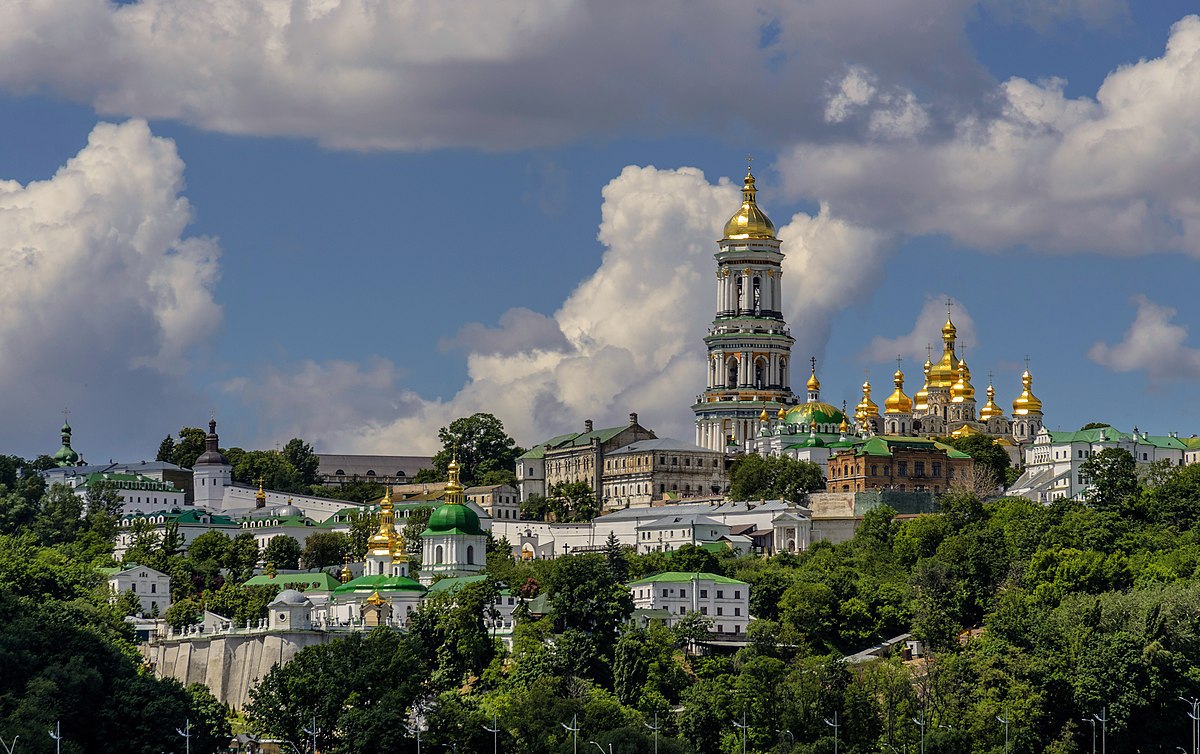
Kyiv-Pechersk Lavra, modern view, photo
Some time ago, Ukrainian President Volodymyr Zelensky instructed the government to consider the issue of renaming modern Russia to Muscovy, since the corresponding petition collected the necessary 25,000 votes on the President's website. It will be interesting to see what the government will come up with, but, despite the practical impossibility of such renaming, there would be a certain logic in it.
Taking away the designation "Rus-Russians" from the Russian Federation, we would return it to ourselves, and it would be correct historically. Otherwise, it would be impossible to return "Ukrainian" history to the Lavra, since the very first known mention of the term "Ukraine" dates back to 1187 (Kievan Chronicle of the Hypatian Codex), when the Kyiv-Pechersk Lavra had almost survived the period of its spiritual dawn.
After 1187 and almost until the XVIII century, there are not very numerous cases of using the term "Ukraine" in sources, and even then mostly in the sense of "borderlands". Meanwhile, many sources of that time, both domestic and foreign, use the terms "Rus-Russia-Russians" in relation to the lands and people of modern Ukraine.
Illustrative in this regard is the document "The Constitution of Philip Orlik" of 1710, which we consider the first Ukrainian Constitution. In its text, the term "Little Russia" in relation to the territories of Ukraine is used 5 times ("Our Motherland Little Russia"), the term "Ukraine" – 6 times, and the people are called exclusively "Little Russian" (6 times).
We do not think that Hetman Philip Orlik was less patriotic than Maksym Ostapenko, so we will also use the term "Russians" in relation to our people and Ukraine simply because that is how they are called in the quoted sources. We will not abandon this term because it would mean a voluntary renunciation of almost a millennium of our history, the history of modern Ukraine.
The First Cave
The Venerable Anthony of the Caves is recognized as the founder of the Kyiv-Pechersk Monastery, as well as all of Russian monasticism. This is fair to the same extent as recognizing the Venerable Anthony the Great as the founder of monastic life.
Before Anthony the Great, there were the Venerable Paul of Thebes and other hermits. Before Anthony of the Caves, there were monasteries in Kyiv and there was already a cave in the Kyiv hills. Who dug it and for what purpose? Historical data diverge on this point. According to one version, the Venerable Anthony came to the Kyiv hills in the early 1030s and settled in the old Varangian cave. According to legend, this cave was dug by Varangian bandits who robbed trading ships traveling "from the Varangians to the Greeks", i.e., along the Dnieper River. Allegedly, they hid their stolen treasures in the cave.
Soon, disciples began to gather around Anthony, including Ilarion. In 1051, this same Ilarion was appointed Metropolitan of Kyiv.
However, another version is considered more reliable.
Kyiv Prince Yaroslav the Wise had a country estate in an area called "Berestovo". The area got its name from the many birch trees growing there (hello to those who associate the phrase "Russian birches" exclusively with Russia-Muscovy). There was a church dedicated to the holy apostles near the estate, where Ilarion served as a priest. According to some reports, there was a whole team of clergy serving there, and Ilarion was the head priest. Here is a quote from the Primary Chronicle of the Venerable Nestor: "The God-loving Prince Yaroslav loved the village of Berestovo and the church that was there, of the holy apostles, and helped many priests, among whom was a presbyter named Ilarion, a man of piety, learned and ascetic. And he walked from Berestovo to the Dnieper, to the hill where the old Pechersk Monastery now stands, and there he prayed to God in secret, for there was a great forest. He dug a small cave, two fathoms deep, and coming from Berestovo, he sang the church services there and prayed to God in secret."
In other words, the first cave was dug by Ilarion while he was still a presbyter.
Ilarion was an outstanding spiritual writer, the author of the famous "Word on Law and Grace" (full title: "On the Law Given through Moses, and on Grace and Truth Revealed through Jesus Christ, and on How the Law was Set Aside, and Grace and Truth Filled the Whole Earth, and Faith Spread to All Nations, and Came to Our Russian People"). This "Word" is a literary monument that testifies to the fact that at that time there were people in Rus' who were not inferior in erudition to the Byzantines. Ilarion is also the author of the "Confession of Faith" and "Word on the Renewal of the Tithing Church", "Praise to Prince Vladimir," and other works.
There is an opinion that Ilarion not only received education in Byzantium but also visited some countries of Western Europe.
In 1051, at the behest of Yaroslav the Wise, Ilarion was appointed Metropolitan of Kyiv. Around 1051, the Venerable Nestor recorded: "Yaroslav appointed Ilarion, a Russian by birth, as Metropolitan in St. Sophia's, gathering the bishops," and a little later repeated this message: "Then God put the thought in the prince's heart to appoint him as metropolitan in St. Sophia's, and this cave came into being" (Primary Chronicle). This event was quite unusual for that time. Ilarion was Russian and was appointed Metropolitan not by Constantinople but by the council of Russian bishops.
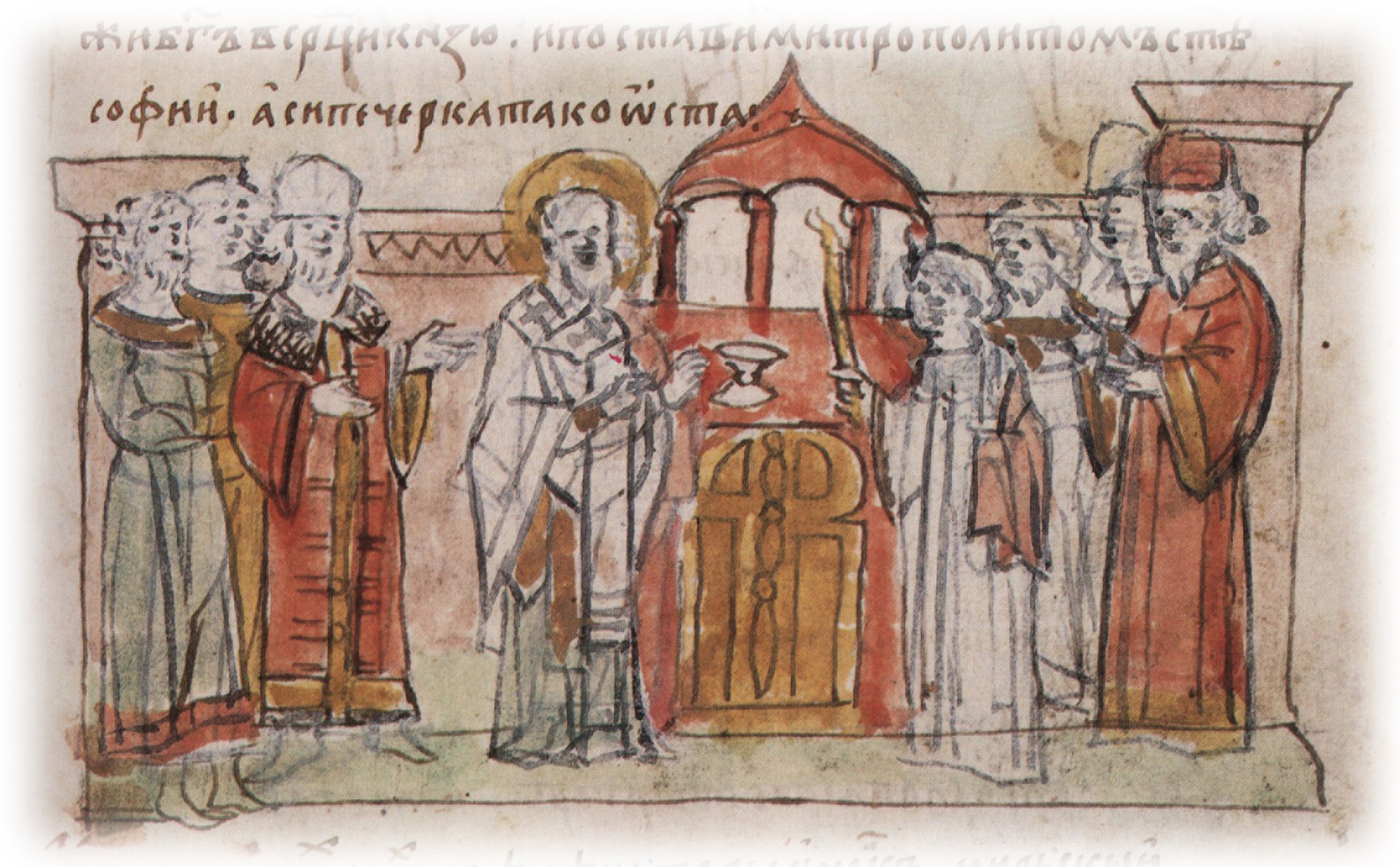
Yaroslav Vladimirovich of Kiev appointing Hilarion Metropolitan of Rus in the Cathedral of St Sophia. Miniature from the Radziwill Chronicle, 15th century
The appointment by Yaroslav Vladimirovich of Kyiv of Ilarion as Metropolitan in St. Sophia's Cathedral in Rus' was a serious departure from tradition, as all previous Metropolitans of Kyiv had been Greeks, appointed to the Kyiv See in Constantinople, and thus by the will of the Byzantine Emperor. It is likely that this circumstance was the reason why Yaroslav decided to demonstrate independence in this matter, as shortly before this, he had waged a cruel and unsuccessful war against Byzantium (1043), during which almost the entire Russian fleet perished, and 800 Russian warriors were blinded by the Greeks.
However, this version is contradicted by the fact that in 1046, peace was concluded between Kyiv and Constantinople, sealed by the marriage of Vsevolod, Yaroslav's son, to the daughter of the Byzantine Emperor Constantine Monomakh. By the way, this marriage ushered in a series of dynastic marriages of Yaroslav's daughters with European rulers, as a result of which Yaroslav became the "father-in-law of Europe".
Another version of why Yaroslav appointed Ilarion as metropolitan instead of waiting for a Greek from Constantinople was the fact that after the death of the previous Metropolitan of Kyiv, Theopemptus, the Greeks did not send a new metropolitan to Rus' for about three years.
Be that as it may, in 1051, Ilarion left the cave near Berestovo and assumed the Metropolitan throne of Kyiv.
And then the Primary Chronicle tells the following: "And a few days later, a certain man, a layman from the city of Liubech, was inspired by God to go on a pilgrimage. And he went to the Holy Mountain, and there he saw monasteries, and he visited them, loving monasticism, and he came to one monastery, and begged the abbot to tonsure him as a monk." This "certain man" was the Venerable Anthony.
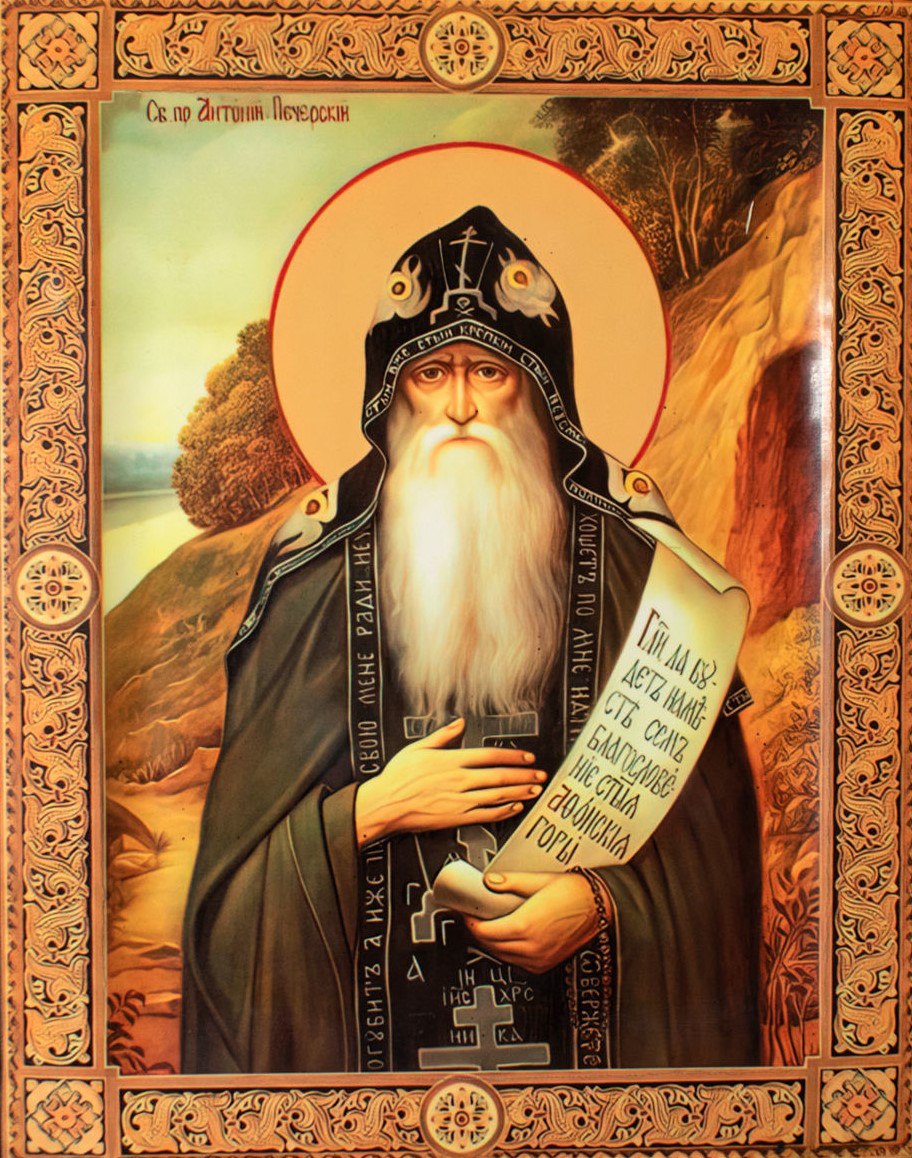
Venerable Anthony of the Caves, icon
In the Tale of Bygone Years, it is said that he left for Mount Athos "a few days later" after Ilarion left the cave, but according to other sources, he did not leave at that time; instead, he returned to Kyiv and settled in the cave.
Despite such discrepancies, 1051 is officially considered the year of the foundation of the Kyiv-Pechersk Lavra.
Further, the Tale of Bygone Years briefly recounts how Anthony accepted tonsure and how the Athonite abbot sent him back to Rus', prophesying that he would become the founder of Russian monasticism.
And then Nestor the Chronicler provides interesting information: "When he (Anthony – Edit.) came to Kyiv and began to think about where to settle; and he walked around the monasteries and did not love them because God did not want it." It turns out to be a strange thing: Anthony, who was yet to become the founder of monasticism in Rus', found existing monasteries here. What were these monasteries, and why did they not "count"?
Nestor then goes on to say in his "Tale...": "Indeed, many monasteries have been established by princes, boyars, and the rich, but they are not like those established through tears, fasting, prayer, and vigilance." Most likely, these were monastic communities established by princes and wealthy individuals for similar reasons as contemporary oligarchs build cathedrals and churches. The monks who lived there may have had a desire for piety, but they were not familiar with monastic rules or the experience of monastic life.
This was brought to Holy Rus' precisely by Saint Anthony of the Caves, hence he is called the father of Russian monasticism.
After Anthony did not find a suitable place for his spiritual endeavors among these courtly monasteries, he "... began to wander through the forests and mountains, seeking a place that God would indicate to him. And he came to the hill where Ilarion had dug a cave, and he loved that place, and settled there, and prayed to God with tears, saying: 'Lord! Strengthen me in this place, and let there be a blessing from the Holy Mountain and my abbot, who tonsured me.' And he lived here, praying to God, eating dry bread, and drinking water in moderation, digging the cave and not giving himself rest day and night, enduring in toil, vigilance, and prayer" (Tale of Bygone Years).
There is also a third version of the beginning of the Pechersk Monastery, which attempts to reconcile the first two. According to it, Saint Anthony came to the Kyiv hills in the 1030s after his tonsure on Athos and settled in the Varangian Cave. Then, for unknown reasons, he returned to Mount Athos, and in 1051, he returned again, this time settling not in the Varangian Cave but in the one dug by Ilarion, who by that time had become a metropolitan.
Conclusion
Answering the question posed in the title of the article, let's state the obvious: the Pechersk Monastery derived its name from the cave where Metropolitan Ilarion initially prayed, followed by St. Anthony.
However, it is worth noting a less obvious circumstance: Russian monasticism developed along the same logic as monasticism in general (3rd–4th centuries). Initially, it was eremitic monasticism, when individuals like St. Anthony the Great, and in our case, St. Anthony of the Caves, withdrew from the world, one into the desert and the other into a cave, to escape worldly distractions, to pray alone with God and to lament over sins.
But this world, which, as the Apostle John the Theologian said, "lies in wickedness" (1 John 5:19), followed after these ascetics, seeking counsel and guidance. "You are the light of the world. A town built on a hill cannot be hidden. Neither do people light a lamp and put it under a bowl. Instead they put it on its stand, and it gives light to everyone in the house. In the same way, let your light shine before others, that they may see your good deeds and glorify your Father in heaven" (Matthew 5:14-16).
Likewise, the light of Anthony the Great enlightened people, and so did the light of Anthony of the Caves, which "shone upon" the Russian people.
Who this person was, what information we know about him and his closest disciples – read in the following publications about the Kyiv-Pechersk Lavra.
